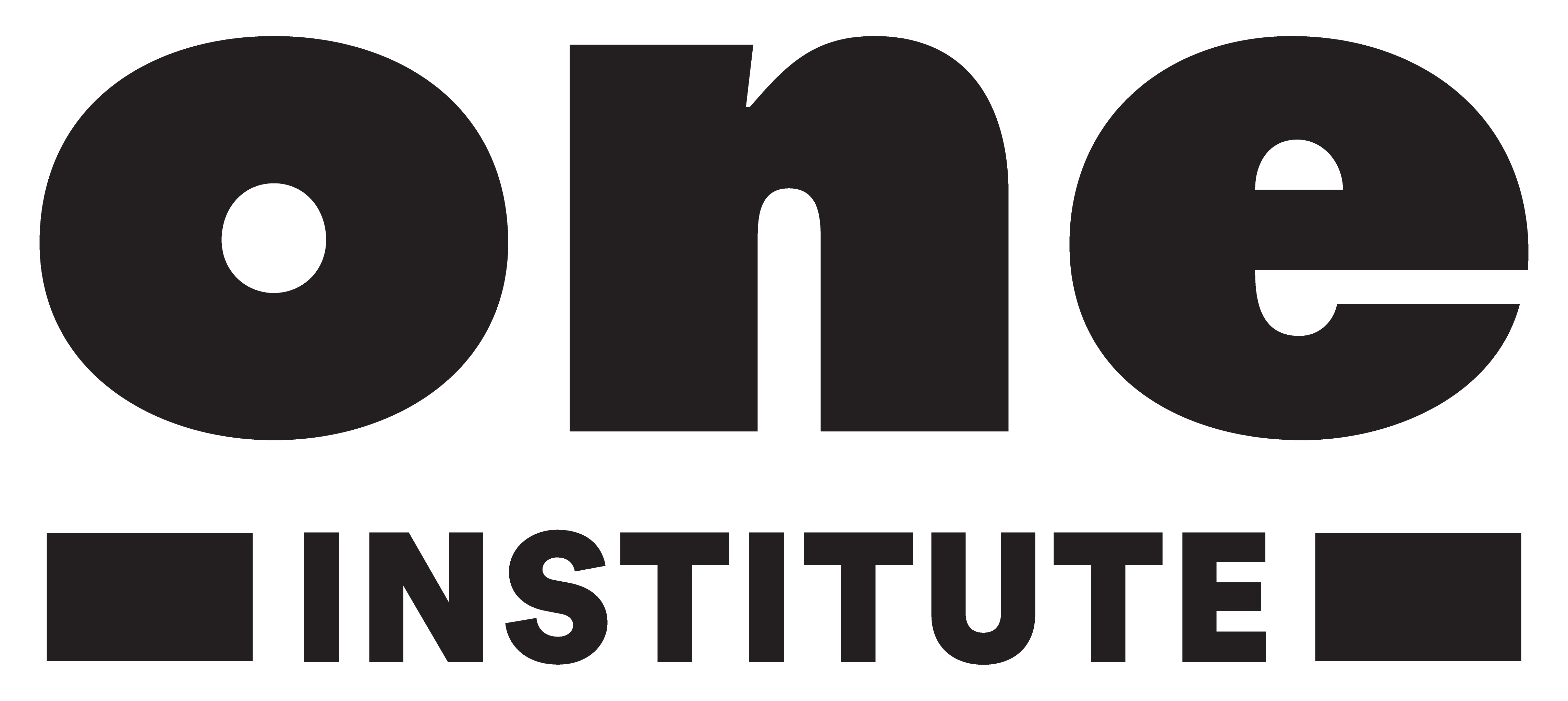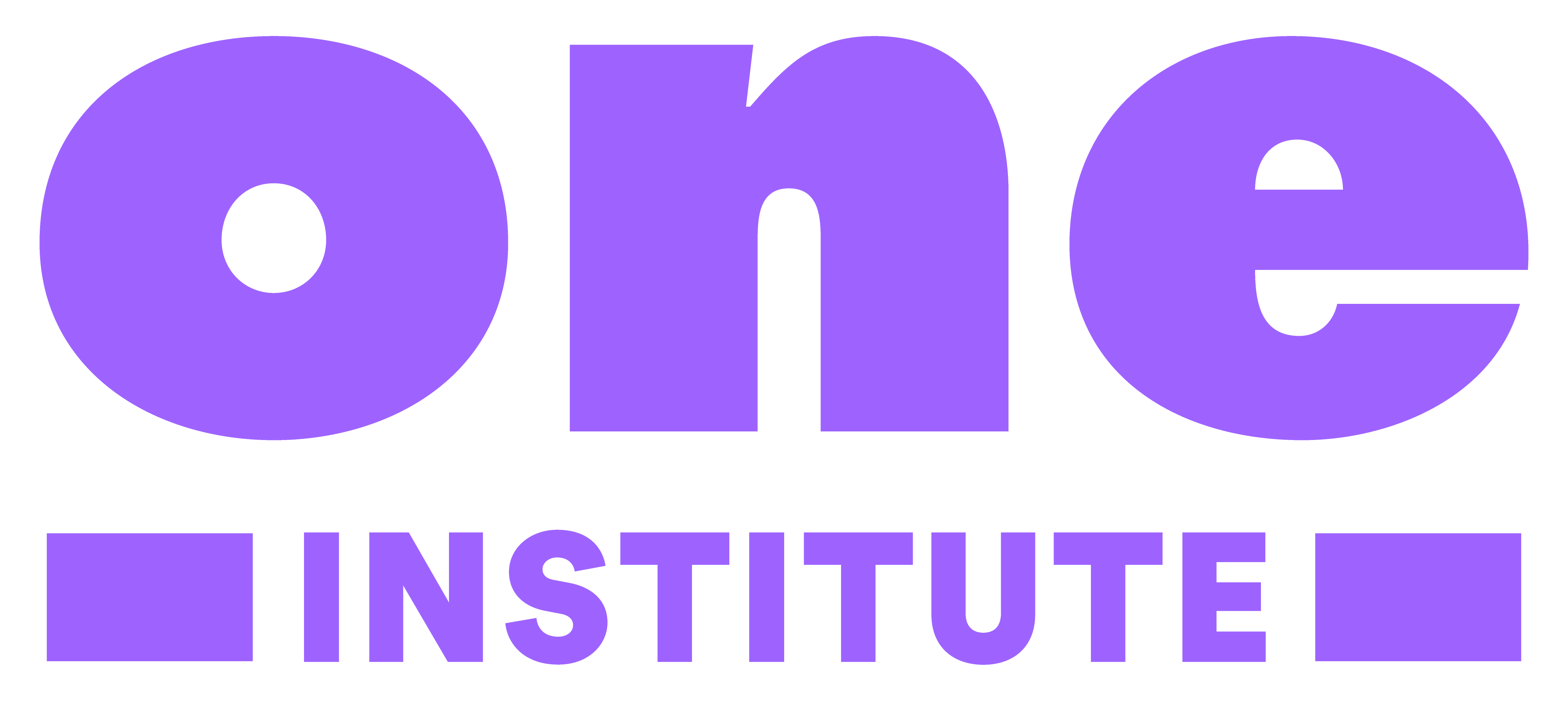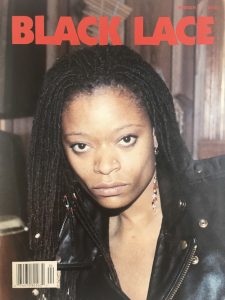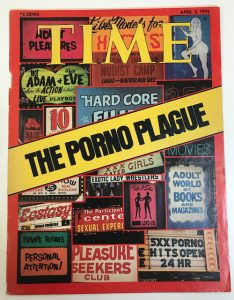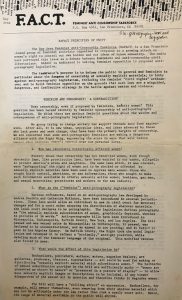ON OUR BACKS: The Revolutionary Art of Queer Sex Work
This article is authored by Alexis Heller, from the 2019-20 cohort of the LGBTQ Research Fellowship program at the One Institute.
As a social worker with LGBTQAI teenagers, many of whom are current or former sex workers, and as a curator whose practice centers marginalized queer histories, I have been dedicated to uncovering complicated, empowered sex worker narratives, rather than the one-dimensional depictions often presented in art and culture. I curated an exhibition titled ON OUR BACKS: The Revolutionary Art of Queer Sex Work, to open at the Leslie-Lohman Museum of Art in New York, and the ONE Archives LGBTQ Research Fellowship allowed me to gain valuable insight into California-based sex worker histories, cultural production, and grassroots organizing.
During my inquiry in the ONE’s vast holdings related to sex work and pornography, a number of ties between queerness, sex work, art and activism emerged. George Chauncey brings the cultural conflation between gay men and sex workers to the fore in his book Gay New York, and this history also came into view with a 1932 cartoon, discovered at the ONE Archives.* The image, from a Louisville, Kentucky newspaper, portrays queer men and sex workers lined up in front of a patrol car, with the phrase, ‘Six of One – Half a Dozen of the Other,’ printed underneath. We know that folks who dare to live outside the boundaries of heteronormative and gender-based standards, have faced arrest and worse, however, this image illustrates the ubiquity of messaging linking the ‘perverted’ as well as the inherent defiance embedded therein.
LGBTQAI sex workers have fought across generations to protect their livelihoods, safety, and right to exist, and they continue to develop unique approaches to addressing the larger needs of the community. At the ONE, the folders dedicated to ‘Prostitution’ and ‘Hustling’, held articles and fliers detailing sex worker actions at the intersections of HIV/AIDS, gender, race, immigration, housing and climate justice. The innovative work of Bienstar, California Advocacy for Trollops, C.O.Y.O.T.E., rentboy.com, Carol Leigh, Margo St. James and others were illuminated, as well as organizing strategies around mutual support and self care.
In the archives of Leon Mostovoy, Peter Thomas, Pat Rocco and Black Lace magazine, I found dynamic representations of community connection and the power of pornography as a tool towards liberation. Mostovoy’s Market Street Cinema series featuring lesbian strip club performers, and the correspondence between Thomas and his clients portrays tender moments of camaraderie. Filmmaker, Pat Rocco and the Black, lesbian, erotic magazine, Black Lace, also received letters of gratitude and passion for their work’s positive representation of queer life and the resistance in their unapologetic embrace of LGBTQ desire.
Queer and transgender artists have consistently used pornography as an instrument to address complex social issues, and at ONE Archives, I was able to look at how societal attitudes towards pornography have fluctuated over time. While a 1976 TIME magazine cover lamented “the porno plague” in Times Square, during the height of the AIDS crisis, one newspaper article questioned whether pornography was in fact, the safest form of sex. Unbridled access to porn with the birth of the internet brought renewed concerns about its effects, and feminists have been debating the evils/merits of pornography for decades. But a ca.1984-85 F.A.C.T (Feminist Anti-Censorship Taskforce) flier seemed particularly prescient. The authors argued that laws censoring pornography because it is ‘harmful to women,’ by default state that women can’t be trusted to make decisions about their own bodies, and could easily lead to anti-abortion, anti-birth control, and anti-sex work legislation. The 2018 FOSTA/ SESTA law, holding website publishers criminally liable if ads for consensual sex work are found on their site, directly threatens sex workers’ labor, safety and survival. Touted by prominent (privileged) feminists, including Gloria Steinem and Ashley Judd, in the name of anti- trafficking, the law assumes a lack of agency and dangerously impacts sex workers most on the margins.
Looking back is a powerful way to gain stamina for moving forward and LGBTQAI sex workers’ continue to utilize the sustenance of art and community in their ongoing fight for freedom.
Image Credits
Top image: Six of One – Half a Dozen of the Other. Cartoon from Baloney Country Press, Louisville, 1932. Prostitution Subject File, ONE Archives at USC Libraries. Unknown artist.
First image: Black Lace Magazine, No. 4, 1991-1992. Published by BLK Publishing. Los Angeles, CA. ONE Periodical Collection, ONE Archives at the USC Libraries.
Second image: “The Porno Plague,” TIME Magazine. April 1976. ONE Periodical Collection, ONE Archives at the USC Libraries.
Third image: A Feminist Anti-Censorship Taskforce flier, c. 1984–1985. Pornography and Women Subject File, ONE Archives at the USC Libraries.
Footnotes
*Chauncey, George. Gay New York: The Making of the Gay Male World, 1890-1940., London: Flamingo, 1995.

As a social worker, storyteller and advocate, Alexis Heller (she/her) has been working to empower LGBTQAI youth in settings such as foster care, shelters, drop-in centers and schools for more than a decade. She began an independent curatorial practice in 2012 centered on marginalized LGBTQAI histories. Heller has organized exhibitions at Smack Mellon, alternative art spaces, and a number of shows at the Leslie-Lohman Museum of Art, including her most recent exhibition, ON OUR BACKS: The Revolutionary Art of Queer Sex Work, that will next travel to Ithaca College in January 2021. Her forthcoming exhibition, The Art of Being a Lesbian Avenger, will go on view at the Corcoran School of the Arts and Design in September 2020.
Alexis Heller received a BA in Psychology and Women’s Studies from Wesleyan University and an MA in Social Work from Columbia University. She currently resides in Brooklyn, NY.
